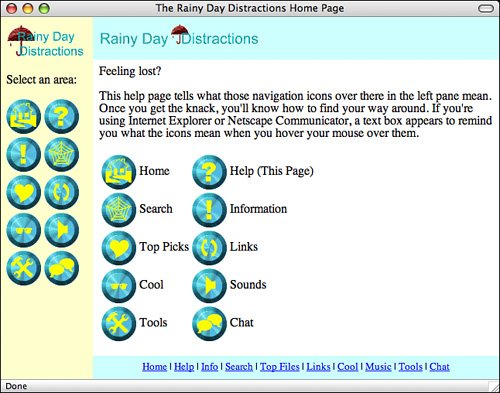What Are Frames and Who Supports Them?
| Today you'll learn about the tags that you can use to create frames. Simply put, frames enable you to divide a browser window and load a different document in each section of the window that you define. Due to the nature of these tags, web pages that use frames simply can't be displayed in really old browsers. They were introduced as a new feature with Netscape Navigator 2.0, which is several years old. Frames rapidly became popular, and they were included in the HTML 4.01 standard. Every popular web browser supports them these days. With version 3.0 of Internet Explorer, Microsoft introduced floating frames. Instead of dividing the browser window into sections, floating frames enable you to include frames inline in your documents, the same way you can with images. Floating frames were also included in the HTML 4.01 standard, and they're supported by all versions of Netscape since 2.0 as well as every version of Internet Explorer since 3.0. Frames give you an entirely different level of layout control than you've had so far in this book. For example, take a look at the example in Figure 14.1. Figure 14.1. A sample web page with frames. On this screen, you see four frames displayed within one browser window. The left frame contains graphical navigation elements, the lower-right frame contains text navigational links, the upper-right frame contains the page header, and the middle-right frame contains the main content of the site. This screenshot also illustrates one of the disadvantages of using frames. The frame that contains the actual page content actually uses a fairly small section of the browser window; the rest of the window is consumed by the other frames. When you separate your layout using frames, you can detract from the important content on your site. Because the information displayed on the page is separated into individual frames, the contents of a single frame can be updated without affecting the contents of any other frame. If you click on one of the linked images in the left frame, for example, the contents of the large frame on the right are automatically updated to display the details about the subject you've selected. When this update occurs, the contents of the left frame and the bottom frame aren't affected. |
EAN: 2147483647
Pages: 305